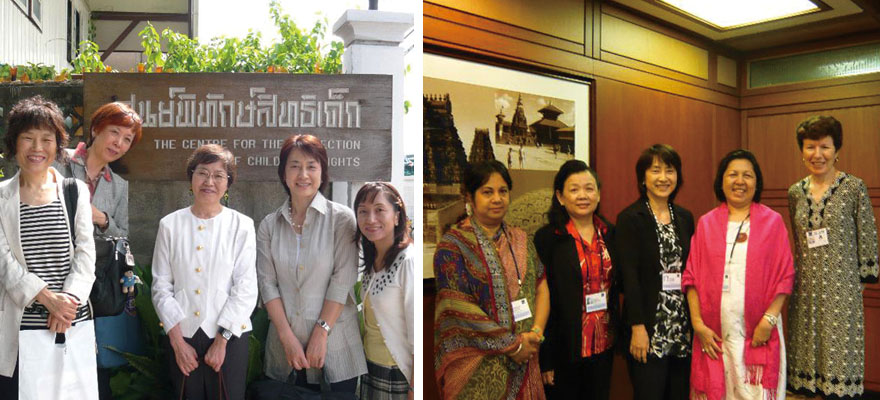Home > Highlighting JAPAN >Highlighting Japan January 2014>Leaning In - The Power of Womenomics -
Highlighting JAPAN
Leaning In - The Power of Womenomics -
An End to the Trafficking of Women
Multi-disciplinary teams find success that crosses borders

The words 'human trafficking' conjure an image of something that exists in the dark recesses of the world – something that has nothing to do with the average person. Yet in reality, human trafficking is a ubiquitous concern. And according to the United Nations Office on Drugs and Crime (UNODC), women and girls account for 79 percent of victims.
"Take human trafficking in the Mekong region alone, which JICA is currently trying to combat," says Yumiko Tanaka, senior advisor on gender and development at the Japan International Cooperation Agency (JICA). "Here you find human trafficking conducted through six contiguous countries: Thailand, Viet Nam, Laos, Cambodia, Myanmar and China." From these locations, various routes branch out and continue on toward other countries, both near and far. "We know that about 800,000 people worldwide are victimized annually," Tanaka says, with sexual exploitation accounting for 79 percent of cases.
JICA is presently working on a variety of projects with the aid of the governments of nations affected by human trafficking including Japan. 4P, a method that tackles the problem from the multiple interrelated angles of policy, prevention, prosecution and protection, has shown strong results. JICA has been particularly engaged in two of these approaches — prevention and protection — through the JICA Viet Nam Project, where a hotline has been set up, as well as the JICA Thailand and JICA Myanmar Projects, which help victims recover and reintegrate into society.
According to Tanaka, the most successful program is presently being implemented in Thailand. In the Thailand Project, multi-disciplinary teams dubbed MDTs work in a system that takes full advantage of the specialized skills and experience of each member. With the Bureau of Anti-Trafficking in Women and Children (BATWC) at the helm, an armada of organizations is linked in a single cooperative network: the police, the Department of Labor Protection and Welfare, public shelters, lawyers, the Ministry of Foreign Affairs, hospitals, prosecutors, immigration offices and foreign NGOs.
MDTs in rural areas share information with the central team in the Thai capital of Bangkok. Their information and data resources are consolidated and used in other countries as well, while the central MDT in turn relies on information exchanged with foreign networks, making it easier for related countries to work with each other.
"For example, if information comes to Bangkok that victims are being held and forced to work in an agricultural region outside the city, the police work to find and rescue them," Tanaka explains. "They then check the victims' conditions, and medical treatment is provided at hospitals administered by the Ministry of Public Health. They're given housing in public shelters, while the Department of Labor Protection and Welfare offers vocational training to enable them to return to society." NGOs work to ensure that victims are not sent in bureaucratic circles, and when the victim is sold overseas, or a foreigner brought into Thailand, the Ministry of Foreign Affairs or immigration offices provide the necessary visas.
As Tanaka explains, "The MDT is a collaborative method that has been adopted in medical and welfare services in Japan and is effective in working toward the eradication of human trafficking as well."
Challenges still remain. "We've found it difficult to collectively retain experience and know-how because of MDT member transfers," Tanaka acknowledges. "With so many fields involved, information is not always distributed smoothly. There are gaps between certain regions, and some areas are not yet equipped with operation bases for MDTs. Despite these issues, I believe it's a collaborative model that is worth reinforcing and improving in the future — for the safety and benefit of the victims."
JICA aims to use the Thailand Project as a model for expanding its MDT activities throughout the ASEAN countries. Great potential is also seen in peer group networks, where women who are victims of trafficking are trained to offer psychological support to others who share similar histories. The Thai peer group program presently has 100 members.
"The goal of this project is to strengthen the links between nations in order to uproot human trafficking in the entire region," Tanaka says. "Even when the crime crosses a border."
© 2009 Cabinet Office, Government of Japan






